#jean martin charcot
Explore tagged Tumblr posts
Text
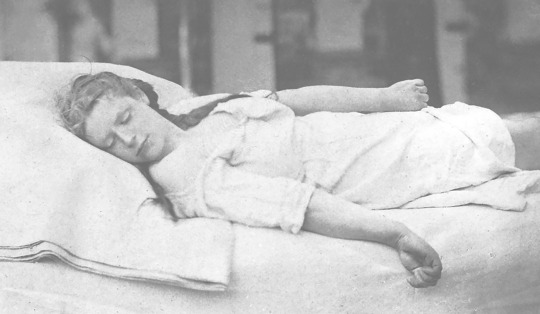
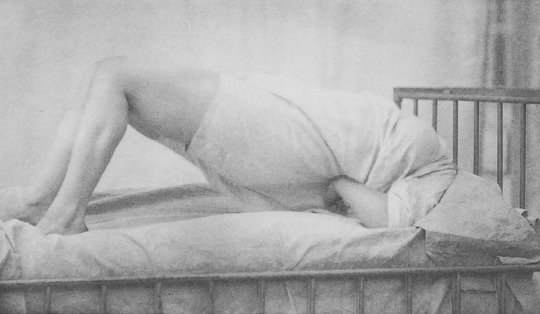
Iconographie photographique de la Salpêtrière
74 notes
·
View notes
Text

Iconographie Photographique de la Salpetriere pub.1878
#hysteria#catalepsy#hypnotism#medical history#jean martin charcot#neurology#19th century#Iconographie Photographique de la Salpetriere
12 notes
·
View notes
Text
I recently picked up a copy of Steve Parker’s “Medicine: A Definitive Illustrated History” which I found to be an excellent read. It touched on medical practices from the earliest days to present medical advances. For those whom it interests, there is a section on the work of Jean-Martin Charcot. While it isn’t quite as nuanced as some books focusing solely on his work, it remains a great reference for an overview of his scientific achievement. Of course he will stay a controversial figure (for good reason) it is important not to forget the bridge he made between mental illness and true science, letting those ridden with mental afflictions to be as one who is sick.
1 note
·
View note
Text
Jane Avril et Toulouse-Lautrec
L'affiche que l'on aperçoit sur cette colonne Morris dans l'épisode Climatiqueen est une affiche du peintre français Toulouse-Lautrec représentant Jeanne Louise Beaudon, plus connue sous le pseudonyme de Jane Avril.
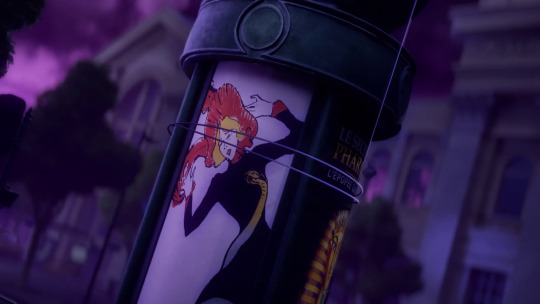
Jane Avril est née en 1868 à Paris et était l'une des danseuses du Moulin Rouge les plus célèbres de l'époque.


Maltraitée dans sa jeunesse par sa mère, elle sera internée à l'hôpital de la Salpêtrière en 1882 à l'âge de 14 ans et sera diagnostiquée d'une « chorée » : une maladie neurologique qui se manifeste par des mouvements convulsifs et incontrôlables, qu'elle-même appelle la « danse de Saint-Guy » (Au XIXe siècle, l'hôpital était alors l'hospice de la Salpêtrière, un asile pour femmes atteintes d’épilepsie, d’hystérie et de schizophrénie).
Au sein de cet hôpital, Jeanne découvre « le Bal des Folles » : chaque année, la bonne société parisienne s’encanaille le temps d’une soirée en compagnie des patientes internées qui étaient alors exhibées, et paradaient et dansaient en costumes de carnaval. C'est au cours de ce « bal » que Jeanne se découvrira un don et une passion pour la danse.
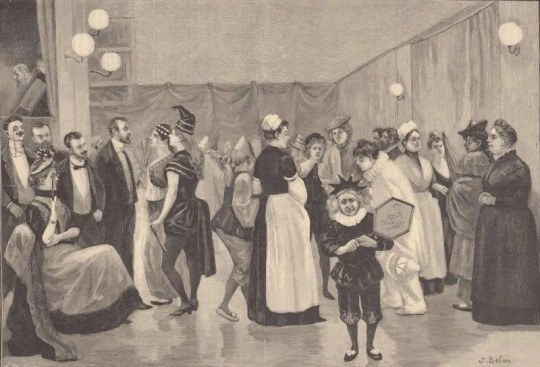
A cette époque, il en fallait peu pour être internée à la Salpêtrière : un mari qui cherche à se débarrasser de son épouse, une santé fragile ou bien un tempérament excentrique... Et sauf exception, on n'en sortait pas. Pour cela, il fallait être déclarée « guérie » par le docteur Jean-Martin Charcot, directeur du « service des hystériques » de l'hôpital et grand fondateur de la neurologie moderne (il a notamment donné son nom à la maladie de Charcot).
Jeanne fait partie des rares femmes à avoir pu quitter cet endroit. Mais elle retombe entre les griffes de sa mère abusive et elle décide de fuguer. Un soir alors qu'elle voulait se jeter dans la Seine pour s'ôter la vie, elle est recueillie in extremis par des prostituées qui la prennent sous leur aile et lui font découvrir le Paris nocturne.
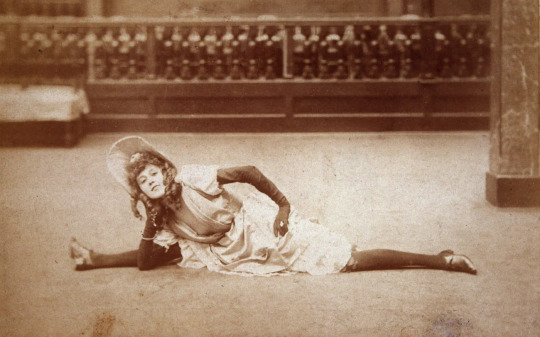
Sous le pseudonyme de Jane Avril, elle commence à danser au Bal Bullier (situé à Paris à l'emplacement de l'actuel Centre sportif universitaire Jean-Sarrailh du CROUS de Paris) avec un style très particulier, entre danse et convulsions épileptiques. Très vite, l’étrange performeuse devient la star du Divan Japonais (l'actuel Divan du Monde), des Folies Bergère et du Moulin Rouge.

Elle fréquente alors les milieux intellectuels et artistiques et fera la connaissance de Henri de Toulouse-Lautrec, un habitué des cabarets où il croque avec talent ce monde nocturne.

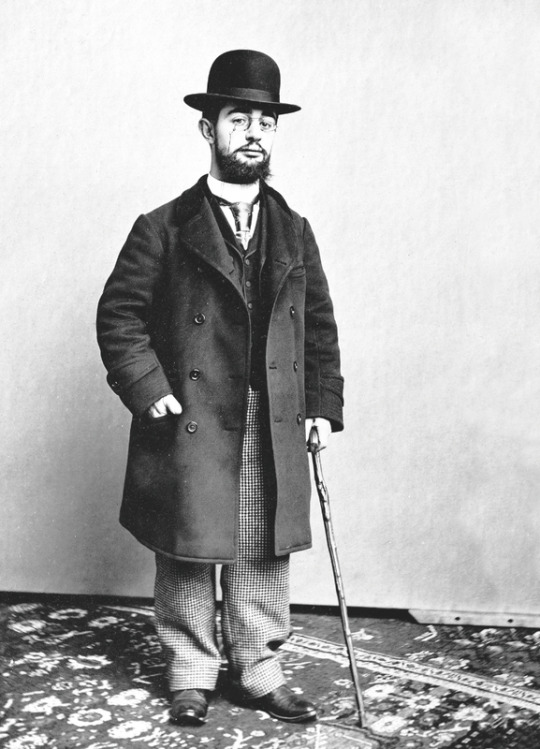
Le peintre est séduit par Jane Avril qui deviendra une amie proche : il lui dédie la une du numéro 1 de la revue L’Estampe originale, et il l’illustrera sur de nombreuses affiches et toiles qui feront à la fois la notoriété du peintre et celle de son modèle.


Jane Avril dansera jusqu'à l'âge de 67 ans. Elle décèdera à 74 ans et est enterrée au cimetière du Père-Lachaise.
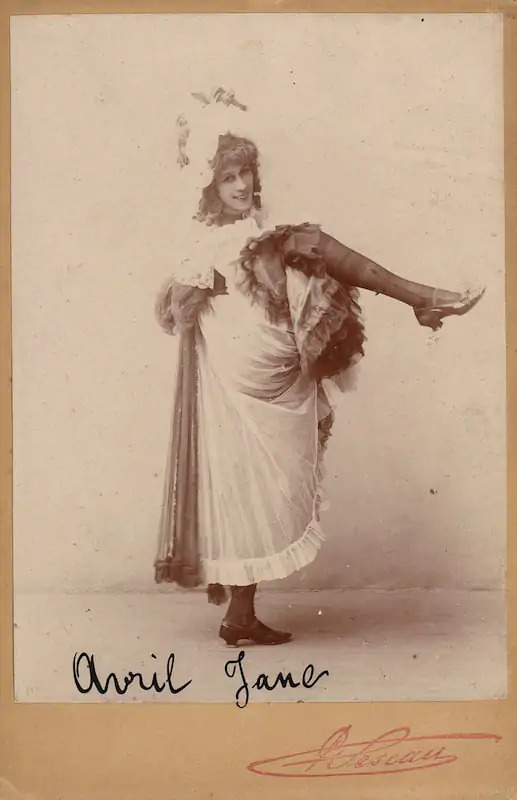
#Miraculous#MLBS6Spoilers#miraculous ladybug#adrien agreste#marinette dupain cheng#ladybug#chat noir#ml analysis#miraculous spoilers#jane avril#toulouse lautrec#miraculous floconfettis#climatiqueen#ml climatiqueen#ml thoughts#colonne morris
88 notes
·
View notes
Text
I think, when we're talking about plural representation, it's important to look at the original context of the story being told.
Split: came out in the age of the internet, Dissociative Identity Disorder had already been renamed, the crew refused help from various systems who offered to consult for them. There was plenty of information on the internet about how "evil alters" are bad for the community and perpetuate harmful stereotypes.
Dr. Jekyll and Mr. Hyde: Stevenson wanted to portray a contrast between what is expected from a man under religious and social repression versus a man with no regard for consequence who acts on his darkest impulses. The book was published in 1886, before Dr. Jean-Martin Charcot "discovered" what would then be called Hystero-Epilepsy. There was no plural pride movement, no public network where he could research it, and it's likely he simply wanted to represent how even the most presentable of men could secretly be a monster.
Now, Dr. Jekyll and Mr. Hyde is The Originator of the evil alter trope, but I feel that if we treat it that way when divorced from its original context we do a disservice to the text and to its author.
59 notes
·
View notes
Text

The Cartwheel, Henri de Toulouse-Lautrec (Das Wagenrad, Henri de Toulouse-Lautrec)

Rousse (La Toilette) 1889 - Henri de Toulouse-Lautrec
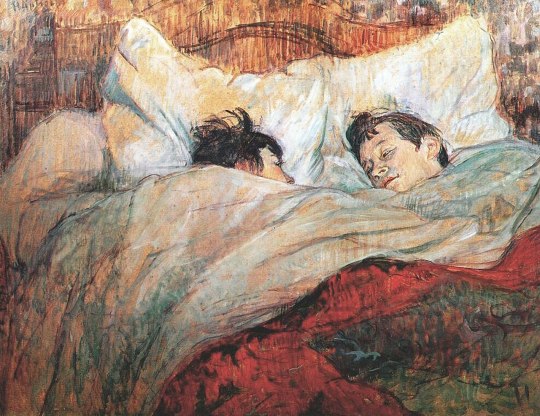
Au lit Lautrec in bed 1893

Henri de Toulouse-Lautrec par lui-même 1896
Henri de Toulouse-Lautrec – Wikimedia Commons

Mr. Toulouse paints Mr. Lautrec (c. 1891), a photomontage by Maurice Guibert

At the Moulin Rouge 1890, oil on canvas, Philadelphia Museum of Art

With a nude model in his studio, by Maurice Guibert c. 1895
Henri de Toulouse-Lautrec - Wikipedia

Jane Avril, 1890
Jane Avril (geborene Jeanne Richepin; * 31. Mai 1868 in Paris; † 16. Januar 1943 in Paris), auch Mélinite genannt, war eine französische Tänzerin.
Leben
Wie ihre Vorgängerin im Moulin Rouge, La Goulue, war Jane Avril erst etwa sechzehn Jahre alt, als sie ihre Karriere begann. Vorangegangen war eine schwer belastete Kindheit und Jugend: Ihr Vater, der italienische Marchese Luigi de Font, hatte die Familie verlassen und von ihrer Mutter wurde sie geschlagen. Schließlich wurde Jane Avril in das Nervenkrankenhaus Hôpital de la Salpêtrière eingewiesen, wo Jean-Martin Charcot mit ihr Experimente durchführte. Aus diesem Nervenkrankenhaus wurde sie schließlich nur entlassen, weil die Pflegerinnen von ihrem tänzerischen Talent begeistert waren.
Jane Avril begann ihre tänzerische Laufbahn als Autodidaktin, da sie nie fundierten Tanzunterricht hatte. Mit Tanzimprovisationen zu Walzermusik im Bal Bullier und 1889 als „Reitende Schönheit“ im Hippodrome begann sie Geld mit ihren Darbietungen zu verdienen. Bei der Eröffnung des Moulin Rouge am 6. Oktober 1889 trat Jane Avril (auch Mélinite genannt) mit einem Solo auf und wurde neben La Goulue zum Star.
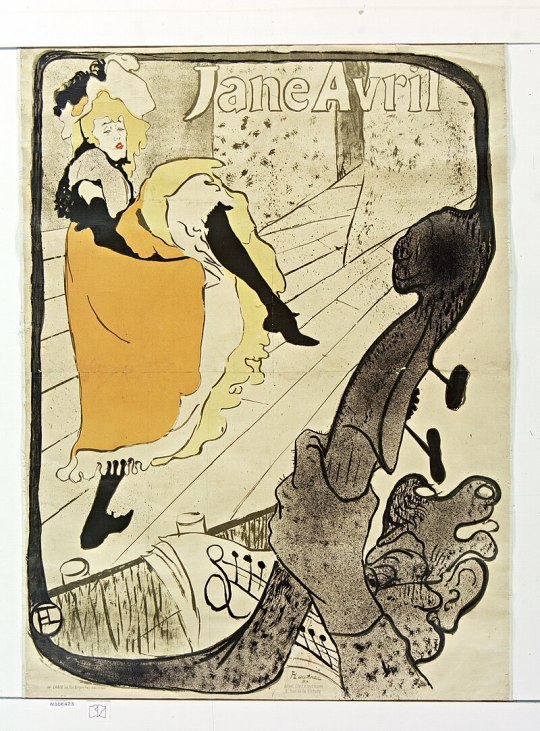
Plakat mit Jane Avril von Henri de Toulouse-Lautrec (1893)
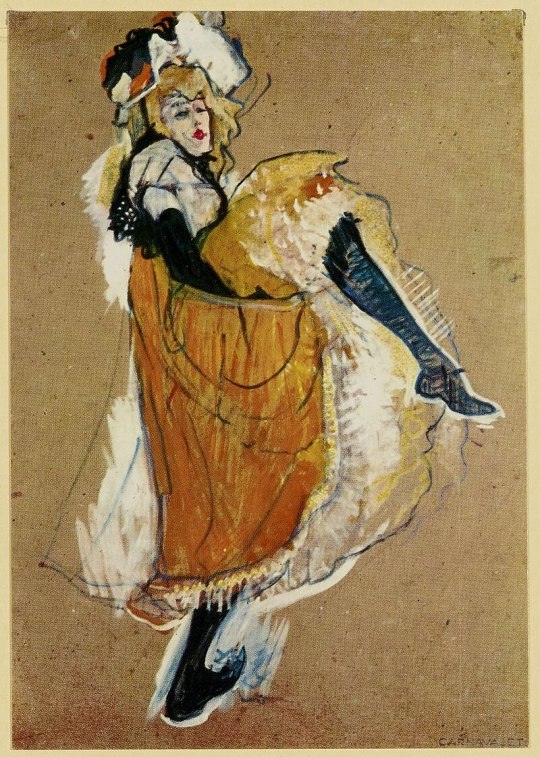
Jane Avril dansant d'après Toulouse Lautrec

Jane Avril sur une photo de Paul Sescau (1858-1926). Vers 1890.
Jane Avril tanzte nie ohne Hut, meist ohne Partner und beteiligte sich nur selten an der Quadrille naturaliste. Auf vielen Werken Henri de Toulouse-Lautrecs wirkt sie denn auch einsam und unglücklich, andererseits aber ist hier ihre besondere Ausstrahlung ebenso wie ihre raffinierte Garderobe festgehalten. Henri de Toulouse-Lautrec begegnete ihr erstmals im Moulin de la Galette und porträtierte sie in den Jahren 1892 bis 1893 mehrmals. Es entstanden mehrere Plakate, die sie bei ihm in Auftrag gab, wie für ihre Auftritte 1893 im Jardin de Paris auf den Champs-Elysées.
Künstler und Literaten wie Arsène Houssaye, Alphonse Allais, Pierre-Auguste Renoir und Teodor de Wyzewa zählten zu ihren Freunden und Bewunderern; letzterer widmete ihr sogar ein Kapitel in seinem Roman Valbert ou Les Récits d’un Jeune Homme.
Jane Avril tanzte im berühmten Cabaret Le Chat Noir, dem ersten Cabaret seiner Art in Paris, im Casino de Paris und erschien in den Folies Bergère als Pierrot in einer Ballett-Pantomime. 1897 gab sie ein erfolgreiches Gastspiel im Palace Theatre in London, ein Gastspiel führte sie nach Madrid. 1910 gebar sie einen Sohn; später heiratete sie den Maler Maurice Biais, der sie 1926 nach einem erbärmlichen Leben außerhalb der Hauptstadt als mittellose Witwe zurückließ.
Während des Ersten Weltkriegs folgten erneute Auftritte bei zahlreichen Wohltätigkeitsveranstaltungen. Im August 1933 wurden ihre Memoiren im „Paris Midi“ veröffentlicht. Anlässlich eines Toulouse-Lautrec-Balls erschien sie am 31. Mai 1935 noch einmal im Moulin de la Galette. Am 22. Juni 1939 wurde für sie eine Wohltätigkeitsveranstaltung organisiert.
Nur noch einmal, 1941, im Alter von 73 Jahren, kehrte sie für ein „großes Finale“ nach Paris zurück. Jane Avril starb im Alter von nahezu 75 Jahren am 16. Januar 1943 im Pavillon des Vieilles in der Rue de la Saida in Paris und fand ihre letzte Ruhestätte auf dem Friedhof Père-Lachaise.
Jane Avril ist eine „zentrale Nebenfigur“ in dem pseudo-dokumentarischen Roman „Das Buch von Blanche und Marie“ von Per Olov Enquist, in dem der Autor das Leben von Marie Curie und Blanche Wittman in teils fiktiven, teils realen Szenen darstellt.
Jane Avril – Wikipedia

La Goulue, Foto von 1885
La Goulue (deutsch „die Gefräßige“), eigentlich Louise Weber (* 12. Juli 1866 in Clichy; † 30. Januar 1929 in Paris) war eine französische Cancan-Tänzerin und Dompteuse.
La Goulue war, neben Grille d’Egout, Nini Patte-en-l’Air und ihren bekannten Partnern wie Valentin le Désossé, Fil de Fer oder Pomme d'Amour die Königin des Cancan und des Chahut.
Anfänge als Tänzerin

La Goulue kommt ins Moulin Rouge von Henri de Toulouse-Lautrec
Louise Weber war ursprünglich Wäscherin und begann 1880 mit vierzehn Jahren ihre Karriere als Tänzerin im Nachtleben von Paris. Sie trat im Nouveau Cirque auf und tanzte die Quadrille im Ambassadeur, im Alcazar d’Hiver und im Elysée-Ménilmontant. In den Jahren 1882 bis 1895 trat sie regelmäßig im Elysée-Ménilmontant auf. Mit ihrer Schwester Victorine, die sich „Gazelle“ nannte, trat sie oft im Duett auf.
Henri de Toulouse-Lautrec begegnete ihr das erste Mal 1891 im Moulin de la Galette. Er sagte über La Goulue:
Sie hat eine Aufrichtigkeit, die man bei keiner anderen findet; mal fröhlich, mal schüchtern, mal kühn oder katzenhaft graziös, geschmeidig wie ein Handschuh.
Durch den Mann ihrer Schwester lernte sie das Jahrmarktsmilieu kennen. Bereits in dieser Zeit begann ihre Arbeit mit Raubtieren. Im Bal Bullier machte sie die Bekanntschaft mit ihrem zukünftigen Tanzpartner Valentin le Désossé (Valentin der Knochenlose, bürgerl. Name Etienne Renaudin, 1843–1907). Bekannt aus dieser Zeit um 1895 ist das Plakat des Künstlers Henri de Toulouse-Lautrec, das Valentin im Vordergrund fast als Schattenriss zeigt, während man der tanzenden Goulue unter die wirbelnden Röcke blicken kann. Sie stand auch dem Maler Goupil Modell. Henri de Toulouse-Lautrecs Plakat Moulin Rouge, La Goulue von 1891 erinnert an die legendären Auftritte von La Goulue, die sich fünf Jahre lang als Publikumsliebling des Moulin Rouge behaupten konnte. Sie begeisterte die Zuschauer mit ihren besonderen Tanzeinfällen. Die große Diseuse Yvette Guilbert schreibt über sie in ihren Memoiren:
Die Goulue in schwarzen Seidenstrümpfen nahm ihren schwarzen Atlasfuß in die Hand und ließ die sechzig Meter Spitzen ihrer Jupons hin- und herkreisen; sie zeigte ihr Höschen, dem drollig ein Herz aufgestickt war, das sich kurios über ihr kleines Hinterteil spannte, wenn sie ihre unehrerbietigen Reverenzen machte; rosa schimmerte die Rosette des Strumpfbandes, und bis auf die feinen Knöchel sank ein köstlicher Spitzenschaum und ließ ihre herrlichen gelenkigen, geistvollen und aufreizenden Beine erscheinen und verschwinden. Mit einem Schwung des Fußes nahm die Tänzerin ihrem Kavalier den Hut ab und setzte sich in die Grätsche, mit starraufrechtem Oberkörper, die schmale Taille in himmelblauer Seidenbluse.
Weltruhm
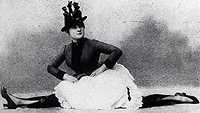
La Goulue, ca. 1891, franz. Cancan-Tänzerin
Am 12. Januar 1889 engagierte Fernando La Goulue für die Aktualitäten-Revue En Selle. Im Moulin de la Galette spielte sie die Rolle eines Klatschweibes (Commère) in einer Revue von Victor Douailhac und Henri Weill. Mit ihrem Engagement im Moulin Rouge, das im Jahr der Pariser Weltausstellung am 6. Oktober 1889 eröffnete, erlangte sie als „reine du quadrille“ (Königin der Quadrille) Weltruhm. Im Moulin Rouge trat sie bis 1895 mit Unterbrechungen auf.
Am 12. April 1893 wurde ihr Tanz zur Eröffnung von Joseph Ollers neuer Music-Hall Olympia am Boulevard des Capucines ein großer Erfolg. La Goulue trat in Salons und auf dem Opernball auf und tanzte ihre weltberühmte Quadrille, mit ihrem Tanzpartner Valentin und Môme Fromage, ihrer Freundin und Liebhaberin. 1895 verließ sie das Moulin Rouge und kaufte auf dem Foire du Trône eine Jahrmarktsbude. La Goulue zeigte hier orientalische Tänze, die sie La Goulue en almée nannte.
Henri de Toulouse-Lautrec bemalte auf ihre Bitte hin die Holz-Paneele, die rechts und links vom Eingang ihrer Jahrmarktsbude angebracht waren. Der links vom Eingang platzierte Vorhang zeigte eine Szene aus vergangenen Tagen in einem Ballsaal am Montmartre. In der Mitte stand La Goulue, den Oberkörper leicht nach vorne gebeugt, gerade im Begriff, ihre Röcke in die Höhe zu raffen. Auf der rechten Seite ist sie mit einem „orientalischen Tanz“ abgebildet, mit dem sie in ihrer Jahrmarktsbude auftrat.

Louise Weber, 1890
Tierbändigerin
1898 zog sie mit ihrer Bude nach Neuilly um und heiratete am 10. Mai 1900 den Artisten José Nicole Droxler. Mit ihrem Ehemann arbeitete sie nun als Raubtierbändigerin und zog von Jahrmarkt zu Jahrmarkt. Zuletzt erschien sie am 30. November 1917 in einer Revue von Rip und Henri Varna im Théâtre des Bouffes du Nord, in einer Produktion von Léon Balterra.
La Goulue lebte danach in einem Schausteller-Wohnwagen im Pariser Vorort Saint-Ouen. Sie starb am 30. Januar 1929 in einem Krankenhaus in Paris. Sie wurde auf dem Cimetière parisien de Pantin beigesetzt. 1991 wurde sie auf Veranlassung des damaligen Pariser Bürgermeisters Jacques Chirac auf den Cimetière de Montmartre (Division 31) umgebettet.
La Goulue – Wikipedia
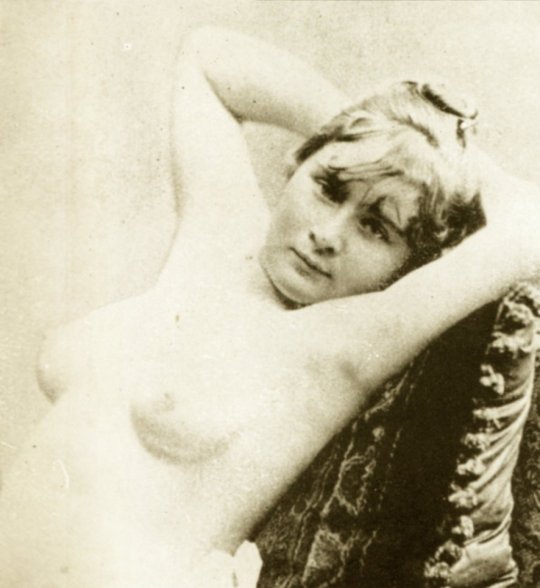
1885 La Goulue (1866 – 1929)

La Goulue, 1895

La Goulue, 1890

1895 show / La baraque foraine 1895.
La Goulue - Wikipedia

La Goulue et Valentin le Désossé dansant au Moulin Rouge, 1895, Théophile Alexandre Steinlen

La Goulue et son mari attaqués par un puma, 24 janvier 1904.
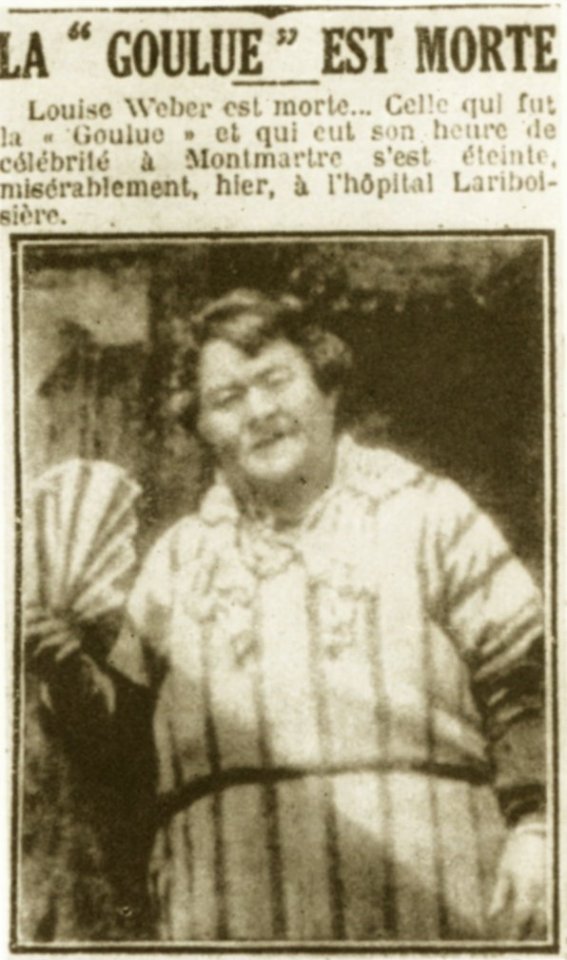
Article de presse annonçant la mort de la Goulue.

Le Moulin Rouge peint par Toulouse-Lautrec, 1889
Cancan
Etymologie
Cancan m. Die Bezeichnung für den um 1830 in Mode kommenden Tanz ist Mitte des 19. Jhs. aus dem Frz. übernommen. Frz. cancan wird als kindersprachliche Reduplikationsform von frz. canard ‘Ente’ (mit lautmalendem kan-) gedeutet, doch steht daneben ein im Sprachbewußtsein wohl hiervon nicht unterschiedenes frz. cancan ‘Lärm, üble Nachrede, Klatscherei’ (auch ‘Schrei von Enten und Papageien’), das mfrz. quanquan ‘Schuldisputation, feierliche Rede’ (nach der oft am Beginn von lat. Schülervorträgen stehenden Konjunktion lat. quamquam ‘ wohl’) fortsetzt. Seit 1829 wird frz. cancan auch für den damals als vulgär geltenden Tanz gebraucht, vielleicht weil dessen Bewegungen an das Watscheln der Enten erinnern (oder wegen der lärmenden Ausgelassenheit der Tanzenden?).
Cancan – Schreibung, Definition, Bedeutung, Etymologie, Beispiele | DWDS
1 note
·
View note
Text
HISTRIONIC PERSONALITY DISORDER
Hysteria or histrionic personality disorder, which holds a fundamental place in the fields of psychiatry and clinical psychology, is a condition within the neurotic disorder group. Research on this disorder was initially conducted by researchers such as Jean Martin CHARCOT, Pierre JANET, Josef BREUER, and Sigmund FREUD. Hysteria has contributed to the birth of psychoanalysis.
According to the Freudian perspective, hysteria or histrionic personality disorder is the expression of suppressed feelings, often related to sexuality, residing in the individual's subconscious. The view that negligent parental attitudes in the parent-child relationship are one of the contributing factors to the emergence of hysteria is widely accepted.
The diagnosis of HISTRIONIC PERSONALITY DISORDER indicates a pattern of excessive emotionality and a craving for attention. These individuals feel discomfort when they are not the center of attention. They believe that relationships should be closer than they actually are. Emotional displays, seductiveness, verbal exaggeration, susceptibility to suggestion, manipulative suicide attempts, and inconsistency stand out. The low functionality in directing the actions of a histrionic individual is followed as a reflection of the mental turmoil they experience. The general characteristics of histrionics include self-centeredness, a habit of exaggerating everything, a desire to attract attention, superficiality in interpersonal relationships, and a desire to escape from the existing order through inconsistent emotional states. Additionally, histrionics being seductive and flirtatious, attempting suicide, and being able to be cheerful in the mornings but melancholic in the evenings are established behavioral patterns in those experiencing this disorder.
Generally, the prevalence in society is around 2-3%.
**TREATMENT**
First and foremost, patients exhibiting HISTRIONIC PERSONALITY DISORDER are generally not motivated for treatment. They consider their own emotional, cognitive, and behavioral patterns to be normal. They propose changes in external conditions rather than themselves as a solution. According to them, they remain the same, and only the environment changes.
Histrionic Personality Disorder, which is a personality disorder, is usually treated by a psychiatrist and psychologist, with a particular emphasis on psychotherapeutic methods. Group therapy and family therapy are generally not recommended as the first choice for the treatment of histrionic personality disorder. Individuals with this disorder usually do not want environments where they are not the center of attention, leading to a misconception in treatment. In cases where HISTRIONIC PERSONALITY DISORDER patients experience severe symptoms, medications recommended by the relevant psychiatrist can be beneficial.
2 notes
·
View notes
Text
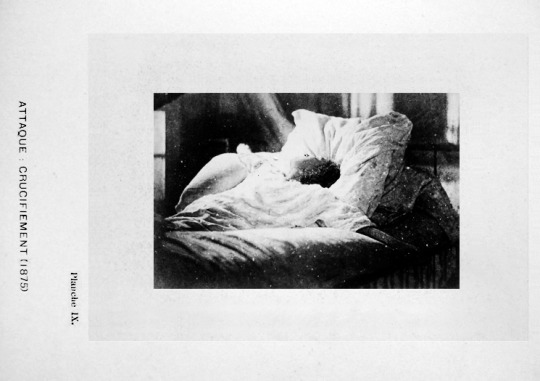
Iconographie photographique de la Salpêtrière
25 notes
·
View notes
Text
Sigmund Freud Lebenslauf
österreichischer Arzt, Neurophysiologe, Tiefenpsychologe, Kulturtheoretiker und Religionskritiker. Er ist der Begründer der Psychoanalyse und gilt als einer der einflussreichsten Denker des 20. Jahrhunderts.
1856 Am 6. Mai als Sigismund Schlomo Freud in Freiberg, Mähren (heute Příbor, Tschechien) geboren.
1860 Umzug der Familie nach Wien.
1873 Abschluss des Gymnasiums mit Auszeichnung, Beginn des Medizinstudiums an der Wiener Universität.
1876–1882 Forschungstätigkeit am Wiener Physiologischen Institut bei Ernst Brücke.
1880 Einjähriger Militärdienst.
1881 Promotion in Medizin.
1882–1885 Anstellung am Allgemeinen Krankenhaus in Wien, beteiligt an der Entdeckung der schmerzstillenden Wirkung des Kokains.
1882 Verlobung mit Martha Bernays.
1885 Habilitation in Neuropathologie in Wien; Dozent für Neuropathologie an der Wiener Universität und Beschäftigung mit hirnanatomischer Forschung.
1885/86 Beobachtung von Hysterien-Patientinnen an der Pariser Nervenklinik Salpêtrière bei Jean-Martin Charcot.
1886 Heirat mit Martha Bernays; Eröffnung einer neurologischen Praxis in Wien.
1891 Umzug in die Berggasse 19 in Wien, wo er bis zu seiner Emigration lebte und seine Praxis einrichtete.
1893 Veröffentlichung „Über den psychischen Mechanismus hysterischer Phänomene“ (mit Josef Breuer).
1895 Geburt der Tochter Anna Freud, des fünften von sechs Kindern; Veröffentlichung der „Studien über Hysterie“ (mit Josef Breuer).
1897 Formulierung des „Ödipus-Komplexes“ in einem Brief an Wilhelm Fließ.
1899 Veröffentlichung von „Die Traumdeutung“.
1904 Veröffentlichung von „Zur Psychopathologie des Alltagslebens“.
1905 Veröffentlichung von „Drei Abhandlungen zur Sexualtheorie“.
1923–1930 Entwicklung des Instanzenmodells der Psyche (Es, Ich, Über-Ich).
1930 Erhalt des Goethepreises in Frankfurt am Main.
1933 Freuds Bücher werden bei den nationalsozialistischen Bücherverbrennungen Opfer.
1938 Nach dem Einmarsch der Nationalsozialisten in Österreich Flucht nach London mit Hilfe von Marie Bonaparte.
1939 Am 23. September stirbt Sigmund Freud in London an den Folgen einer Krebserkrankung.
0 notes
Text

Jean-Martin Charcot and his pet monkey, Rosalie
0 notes
Text

Joan of Arc-Jules Bastien-Lepage-1879
Joan of Arc, the medieval teenaged martyr from the French province of Lorraine, gained new status as a patriotic symbol when France ceded part of the territory to the German Empire after the Franco-Prussian War (1870–71). Bastien-Lepage, a native of Lorraine, depicts the moment when Saints Michael, Margaret, and Catherine appear to the peasant girl in her parents’ garden, rousing her to fight the English invaders in the Hundred Years War. Critics at the Salon of 1880 praised Bastien-Lepage’s use of pose and facial expression to convey Joan’s spiritual awakening, but found the inclusion of the saints at odds with his naturalistic style. Like Joan of Arc, he was a product of a poor family from the rural province of Lorraine in the northeast of France. How to represent an otherworldly moment in the everyday life of an extraordinary girl? How to represent an otherworldly moment in the everyday life of an extraordinary girl? depiction of the thirteen-year-old Joan of Arc (ca. 1412–1431) hearing the voices of three saints while winding wool in her backyard in Domrémy. In preparation for the picture, Bastien-Lepage visited the village, not far from his birthplace of Damvillers The detailed garden setting is said to be based on the yard of his family home and it is informed by a careful study of the region’s plant life. Contrasting with this fidelity to nature is the miraculous apparition of Saints Michael (in armor), Margaret, and Catherine hovering in the air at the upper left. Joan is caught between these two worlds. Her seemingly-possessed wide-open clear blue eyes, feverishly flushed cheeks, suggest that she has been transported into a moment of mystical communion with the saints, who have come to convince her to fight against the English invaders in the Hundred Years War. Still, she remains tied to the earthly realm, wearing the traditional peasant dress of Lorraine: Her clenched foot betrays the tension of her body (and the intensity of her vision), while her proper left hand hangs on to the end of a tree limb, steadying her while she listens to the voices of the saints a friend of Bastien-Lepage’s, recalled that the composition was inspired by an incident in which the artist’s mother experienced a vision after returning from the fields, weary from farming. There are several historical and contemporary precedents for this formal arrangement that Bastien-Lepage may have known, including Léon Benouville’s 1859 picture, which hung in Joan’s family cottage in Domrémy and served as the frontispiece for Wallon’s biography of Joan Masters in Art: Bastien-Lepage (1908) indicated that the artist doubled the size of the work to incorporate the saints into the composition. If correct, this statement confirms that Bastien-Lepage started with the figure of Joan, perhaps intending that viewers would simply imagine her holy vision, and only later added the embodiments of the saints. Many critics appreciated Bastien-Lepage’s compellingly lifelike portrayal of Joan and his evocation of her inner state. numerous contemporary critics objected mightily to the disjunction between the representation of the saints, floating in mid-air, and the otherwise highly realistic scene Much has been written about Joan of Arc, both factual and theoretical. That at a young age this medieval figure had visions of the saints that brought her to her calling as a warrior for her people appears to be fact, but the source of those visions has been debated. Recent scholars (both historical and medical) have discussed such possible sources as epilepsy, migraines, tuberculosis, and schizophrenia. In the painter’s time, critics compared the hysterics who populated the Salpêtrière sanitarium of Dr. Jean-Martin Charcot with Bastien-Lepage’s own image of Joan
The subject of Joan of Arc had been popular throughout the nineteenth century, but the Franco-Prussian War of 1870 provided the catalyst for the fervent revival of her cult. Part of her native region of Lorraine was annexed to the German Empire at the end of the war, making Joan an ideal symbol of France’s hoped-for resurgence in the wake of a crushing military defeat. Even as late as 1879, when Bastien-Lepage painted this picture, postwar morale throughout France was low, and sculptures and paintings of Joan of Arc flooded the Salons of the time. As Bastien-Lepage was also from Lorraine, he would have been keenly aware of Joan of Arc’s legendary power. However, rather than take up the more typical image of Joan dressed for battle in a man’s metal armor, leading French troops to victory—he seized on the story of her patriotic awakening, a fitting subject given France’s sunken national spirits.-The Metropolitan Museum of Art
0 notes
Text
Hypnosis in Memory Retrieval In recent years there has been a myriad of books and articles written concerning the use of hypnosis and memory retrieval. Aside from the clinical application of hypnosis in treating a variety of psychiatric disorders, hypnosis has received much news coverage concerning its use in awakening early memories of sexual abuse, and even past life therapy. Moreover, there are numerous books and CDs available teaching self-hypnosis as a means memory improvement and recall as well as a method of self-help or self-therapy. Hypnosis, today, is used in a variety of therapy and research, including criminal investigations. Hypnosis is viewed as viable research and therapy tool. Hypnosis is said to be a social interaction "in which one person, the subject, responds to suggestions given by another person, the hypnotist, for imaginative experiences involving alterations in perception, memory, and the voluntary control of action" (Memory pg). The responses are generally associated with a "degree of subjective conviction bordering on delusion, and an experience of involuntariness bordering on compulsion" (Memory pg). "The use of hypnosis for trauma-related distress has been around since the days of Freud" (Rowe pg). The history of hypnosis reaches back to the ancient temples of Aesculapius, the Greek god of medicine. While patients slept, the priest would utter advice and reassurances to them, causing them to believe the gods had spoken to them in their dreams (Memory pg). In the 1700's, Franz Anton Mesmer theorized that disease was caused by imbalances of a physical force, called animal magnetism, affecting various parts of the body" (Memory pg). Mesmer believed that by redistributing this magnetic fluid, cures could be achieved. This procedure usually resulted in "pseudoepileptic seizures known as 'crises'" (Memory pg). In 1784, Benjamin Franklin chaired a French royal commission concluding that the "effects of mesmerism, while genuine in many cases, were achieved by means of imagination and not any physical force" (Memory pg). Franklin's proceedings might well be the "first controlled psychological experiments" (Memory pg). Despite the fact that Mesmer's theory was discredited, his practices did not die. One of his followers, the Marquis de Puysegur, magnetised a young shepherd boy named Victor Race, leading to a major transition regarding Mesmer's theory (Memory pg). Rather than a magnetic crisis, "Victor fell into a somnambulistic state in which he was responsive to instruction, and from which he awoke with an amnesia for what he had done" (Memory pg). By the 19th century, John Elliotson, James Esdaile, and others were successfully using mesmeric somnambulism as an anesthetic for surgery (Memory pg). James Braid, another British physician, speculated that somnambulism was caused by the paralysis of nerve centers induced by ocular fixation, in order to eliminate the taint of mesmerism, he renamed the state neurhypnotism" (nervous sleep), a term later shortened to hypnosis. Later, Braid concluded that hypnosis was due to the subject's concentration on a single thought monoideism) rather than physiological fatigue" (Memory pg). Jean Martin Charcot, the late 1880's, believed that hypnosis was a related form of hysteria, a central nervous system disorder. A.A. Liebeault and Hippolyte opposed his view, emphasizing the "role of suggestibility in producing hypnotic effects" (Memory pg). Sigmund Freud also studied Charcot, and began to develop his "psycholgenic theories of mental illness after observing the suggestibility of hysterical patients when they were hypnotized" (Memory pg). During the early 1900's several researchers in the United States began conducting their own studies of hypnosis. Interest in hypnosis rose greatly after World War II, and gave rise to organizations such as the "Society for Clinical and Experimental Hypnosis, the American Society of Clinical Hypnosis, affiliates of the International Society of Hypnosis, as well as journals such as The International Journal of Clinical and Experimental Hypnosis, The American Journal of Clinical Hypnosis," to name a few (Memory pg). Hypnotizability is measured by standardized psychological tests such as the Stanford Hypnotic Susceptibility Scale or the Harvard Group Scale of Hypnotic Susceptibility. These instruments are work-samples, analogous to other performance tests. They begin with a hypnotic induction in which the subjects are asked to focus their eyes on a fixation point, relax, and concentrate on the voice of the hypnotist (although suggestions for relaxation are generally part of the hypnotic induction procedure, people can respond positively to hypnotic suggestions while engaged in vigorous physical activity). The hypnotist then gives suggestions for further relaxation, focused attention, and eye closure. After the subjects close their eyes, they receive further suggestions for various imaginative experiences. For example, they may be told to extend their arms and imagine a heavy object pushing their hand and arm down; or that a voice is asking them questions over a loudspeaker; or that when they open their eyes they will not be able to see an object placed in front of them. Posthypnotic suggestions may also be given for responses to be executed after hypnosis has been terminated, including posthypnotic amnesia, the inability to remember events and experiences which transpired during hypnosis. Response to each of these suggestions is scored in terms of objective behavioral criteria -- do the subjects' arms drop a specified distance over a period of time, do they answer questions realistically, do they deny seeing the object, etc." (Memory pg)? Therapists frequently use hypnosis to help patients recall forgotten incidents, such as child sexual abuse. There are numerous reports regarding the success of this technique, however, many of the reports are "anecdotal in nature and fail to obtain independent corroboration of the memories which emerge" (Memory pg). Due to the fact that hypnotic hypermnesia tends to be unreliable, the "risk of increased responsiveness to leading questions and other sources of bias and distortion, such clinical practices are not recommended" (Memory pg). The same is similar for forensic situations. The introduction of memories recovered through hypnosis are generally severely limited in many legal jurisdictions. For those wanting to using hypnosis for forensic purposes, the Federal Bureau of Investigation has published a set of guidelines, "despite the lack of evidence supporting the practice" (Memory pg). Most psychologists and psychiatrists believe memories of trauma can be put "out of reach of consciousness and alter retrieved, however most now avoid using the Freudian term 'repression,' in favor of more descriptive terms such as 'amnesia and delayed recall' (Horn 52-63). Still others refer to dissociation, "which describes the mind's protective detachment from a traumatic experience as it is happening, effectively fragmenting consciousness" (Horn 52-63). Studies of dissociative disorders "maintain that memories of traumatic events formed while a person is in the altered state of mind induced by terror are frequently inaccessible to ordinary consciousness" (Horn 52-63). However, experts say that dissociated memories remain indelible and can be triggered decades later by events or sensations (Horn 52-63). The physiology of memory loss and retrieval is only beginning to be understood. Scientists believe that memories are stored as electrical patterns in neurons deep in the brain's hippocampal region...Over time, these patterns are translated into new neural circuitry in different brain area, creating a permanent record of the events. I ntensely traumatic events, says Yale University psychiatry Prof. Michael Davis, 'produce unusually strong nerve connections that serve as long-lasting memories.' Years later, the right stimulus can set those nerve circuits firing and trigger the fear, with no immediate understanding of its source" (Horn 52-63). Although, may scientists believe that memories can be lost and then recovered years later, there is a growing number who do not. Sociologist Richard Ofshe of the University of California at Berkeley says that after sixty years of experiments, there is yet any empirical evidence to prove that repression exists (Horn 52-63). Ofshe believes that people forget things, intentionally avoid painful subjects, and may actually have selective traumatic amnesia, "if the terror of an experience is so great that the normal biological process underlying information storage is disrupted - as in an alcohol - induced blackout...But no one has ever shown that the memory of repeated abuses can be uncontrollably and completely stripped from a person's consciousness" (Horn 52-63). Prof. Paul McHugh of Johns Hopkins University says that quite the contrary, most children are more likely to remember severe traumas rather than block them out. Elizabeth Loftus, a memory researcher at the University of Washington says, What's being claimed is that traumatic memory is driven into a corner of the unconscious where it sits like Rip van Winkle and doesn't age and wakes up 20 years later" (Horn 52-63). Memory, Loftus says "is not a computer or videotape recording. We don't just pop in a tape or call it up in perfect condition. Memory is not objective fact but subjective, suggestible and malleable" (Horn 52-63). Loftus has conducted research in which she has implanted false memories of unhappy childhood incidents in adults by simply having an authoritative older sibling recount the event (Horn 52-63). Skeptics say the possibility of retrieving memories is all the more unlikely due to the use of such methods of 'memory retrieval' "as age regression, hypnoisis and injections of sodium amytal, all of which are know to promote confabulation of extraordinarily vivid memories and to cement in the patient's mind the certainty of their truth" (Horn 52-63). The American Medical Association has more than once warned against the use of such techniques (Horn 52-63). It is suggested that before humans could have history, they had to have been able to remember their personal past. This is believed to be the fundamental difference between animal and human memory. "The case for a memory that is distinctly and uniquely human therefore depends on the proposition that there is more than one kind of memory, at least one of which is possessed only by humans" (Suddendorf 133). The idea that there is at least a dual memory system arose from work on amnesia. The famous subject H.M. has dense amnesia for events and knowledge dating from his temporal lobe surgery in 1953, and indeed for memories dating some years prior to that, yet his behavior can still be influenced by past events without his being aware of it (see Ogden & Corkin, 1991, for a recent review). His amnesia seems to apply only to so-called explicit memories, or what Squire 1992) alternatively described as declarative memories; these represent memories that can be brought into conscious awareness. Memories that seem to be unaffected in amnesia are those that we are not aware of, and include those implied by such phenomena as learned motor and cognitive skills, classical and operant conditioning, priming, habituation, and sensitization. Such memories have been called implicit or nondeclarative memories (Suddendorf 133). There are many self-hypnosis books and CDs on the market today for those who want to explore hypnosis on their own. Brain M. Alman in his book, "Self-Hypnosis: The Complete Manual for Health and Self-Change" writes that hypnosis is not magic, but merely a natural state of mind that one can use to instruct and direct the unconscious mind and body. Alman claims that self-hypnosis can be used to "reduce stress, control pain, conquer fears, overcome allergies and alter unwanted habits" (Alman 5). Andre Weitzenhoffer writes in "Clinical Hypnosis and Self-Regulation: Cognitive-Behavioral Perspectives" that even after more than 200 years after its beginnings, the world is still faced with the "rather remarkable and depressing fact that hypnosis, its most central concept, remains a mystery" (Clinical 21). And on a lighter note, Steven Heller writes, "I firmly believe that hypnosis is just a state - South of Oregon and North of Washington, and it doesn't really exist except in people's minds" (Heller 21). Although, most scientific data suggests that it is unlikely responsible for perfect recall, there are still many who believe that it is an affective tool for psychotherapy and as well as general therapy for pain and stress, etc. There are those who believe that hypnosis can help one stop smoking, lose weight, overcome phobias, as well as recall childhood traumas. Hypnosis is certainly going to continue to be an on-going issue of study and research for decades to come. Works Cited Alman, Brain M.; Lambrou, Peter T. Self-Hypnosis: The Complete Manual for Health and Self-Change. Brunner-Mazel Trade. November 1991; pp 5. Clinical Hypnosis and Self-Regulation: Cognitive-Behavioral Perspectives (Dissociation, Trauma, Memory, and Hypnosis Book Series). American Psychological Association. January 15, 1999; pp 21. Heller, Steven. Monsters and Magical Sticks or There's No Such Thing As Hypnosis New Falcon Publications. December 1, 1994; pp 21. Horn, Miriam. "Memories lost and found." U.S. News & World Report. November 29 1993; pp 52-63. Memory: Hypnosis and the Psychological Unconscious." http://socrates.berkeley.edu/~psy001/jk/psych1mem5.html.(accessed 12-05-2002). Rowe, Donald. "Theoretical and Clinical Issues in Hypnosis: Dissociation and Executive Function." July 1998. http://www.physics.usyd.edu.au/~drowe/research/theoretical/hypnosis.html.(accessed 12-15-2002). Suddendorf, Thomas; Corballis, Michael C. "Mental time travel and the evolution of the human mind." Genetic, Social & General Psychology Monographs. Volume 123. May 01, 1997; pp 133. Read the full article
0 notes
Text
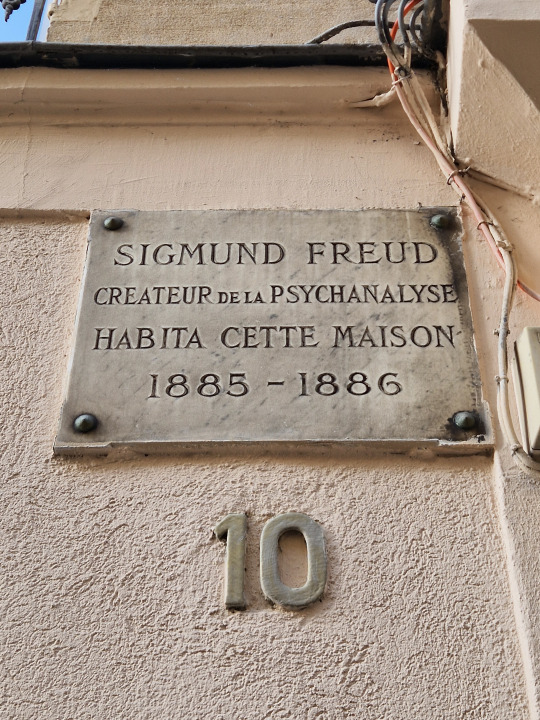

Plaque en hommage à : Sigmund Freud
Type : Lieu de résidence
Adresse : 10 rue Le Goff, 75005 Paris, France
Date de pose : Inconnue
Texte : Sigmund Freud, créateur de la psychanalyse, habita cette maison, 1885-1886
Quelques précisions : Sigmund Freud (1856-1939) est un neurologue autrichien, considéré comme le fondateur de la psychanalyse. Étudiant la médecine à l'Université de Vienne, il s'y spécialise en neurologie et devient l’élève de Jean-Martin Charcot, dont il retient principalement les travaux sur l’hystérie et l’hypnose. De retour à Vienne, il collabore avec Josef Breuer pour publier en 1895 leurs Études sur l’hystérie, posant les bases de la psychanalyse. Il abandonne rapidement l’hypnose pour développer la libre association, où le patient exprime ses pensées sans censure. En 1900, il publie L’Interprétation du rêve, où il expose sa théorie selon laquelle les rêves sont l’expression du désir inconscient. Il élabore aussi la théorie du complexe d’Œdipe, selon laquelle l’enfant ressent une attirance inconsciente pour le parent du sexe opposé. Il attire de nombreux disciples, dont Carl Gustav Jung et Aldred Adler, mais des divergences apparaissent dans la façon de considérer la sexualité et le désir. Il propose plusieurs structurations du psychisme, dont celle basée sur le ça, le moi et le surmoi. Contraint à l’exil après l’annexion de l’Autriche par l’Allemagne nazie, il s’installe à Londres. Il meurt par euthanasie après avoir longuement souffert d'un cancer de la mâchoire. Ses théories, bien que controversées, ont influencé la philosophie, la littérature et le féminisme, tout en étant critiquées pour leur manque de rigueur scientifique. Une autre plaque commémorative en son honneur peut être trouvée non loin rue Royer-Collard, où il résida également à la même période.
1 note
·
View note
Text
Rezension: Vera Buck, "Runa"
Vera Bucks Debütroman "Runa" (2015) führt die Leser ins Paris des späten 19. Jahrhunderts und beleuchtet die Anfänge der modernen Neurologie. Mit großer Detailverliebtheit beschreibt Buck die legendäre Salpêtrière-Klinik, in der Jean-Martin Charcot seine umstrittenen Experimente an weiblichen Patienten durchführt. Ihr Protagonist, der fiktive Medizinstudent Jori Hell, gerät in einen Sog aus wissenschaftlichem Ehrgeiz, fragwürdigen Methoden und dunklen Geheimnissen.
Bucks Ausgangspunkt ist vielversprechend: Die Salpêtrière als historischer Schauplatz, die ethischen Fragen der frühen Psychiatrie und eine mysteriöse Patientin, die Rätsel aufgibt. Doch trotz der sorgfältigen Recherche und einer dichten Atmosphäre hinterlässt der Roman gemischte Eindrücke.
Ein großes Plus des Romans ist die akribische historische Recherche. Buck zeichnet ein lebendiges Bild der Pariser Wissenschaftswelt des 19. Jahrhunderts, inklusive der problematischen Methoden, mit denen Frauen als „hysterisch“ diagnostiziert und instrumentalisiert wurden. Die Salpêtrière-Klinik wird als düsterer, beklemmender Ort geschildert, an dem Fortschritt und Grausamkeit Hand in Hand gehen.
Doch diese Detailverliebtheit wird zum Problem: Oft verliert sich Buck in Beschreibungen, die den Erzählfluss hemmen. Besonders in der ersten Hälfte plätschert die Handlung über lange Strecken dahin, während Jori sich durch die Klinik bewegt, Vorlesungen besucht und die medizinischen Experimente miterlebt. Spannung entsteht nur langsam, und die eigentliche Handlung – die Geschichte um das geheimnisvolle Mädchen Runa – bleibt lange im Hintergrund.
Ein weiterer Schwachpunkt sind die Charaktere. Nur einige Beispiele: Jori Hell, der junge Medizinstudent, dient hauptsächlich als Beobachter der historischen Ereignisse und entwickelt wenig Eigeninitiative. Seine moralischen Konflikte – Bewunderung für Charcot versus Zweifel an den Methoden – sind nachvollziehbar, aber nicht besonders tiefgehend dargestellt.
Runa, die titelgebende Figur, bleibt letztlich ein Rätsel, aber nicht im positiven Sinne. Ihr Schicksal soll wohl als emotionaler Anker dienen, doch ihre Charakterzeichnung ist so spärlich, dass sie eher als Symbol denn als lebendige Figur erscheint. Auch Charcot selbst ist seltsam eindimensional – ein Wissenschaftler mit fast dämonischen Zügen, dem jegliche Ambivalenz fehlt.
Als problematisch erweist sich zudem der Umgang mit Spannungselementen. Der Roman bewegt sich zwischen Medizingeschichte, Mystery und Thriller, doch die Mischung ist nicht immer überzeugend. Manche Wendungen wirken konstruiert, und gerade im letzten Drittel häufen sich überdramatische Szenen, die nicht immer zur nüchternen, sachlichen Atmosphäre des ersten Teils passen.
"Runa" ist ein Roman mit Stärken – insbesondere in seiner historischen Präzision und Atmosphäre –, aber auch mit deutlichen Schwächen. Wer sich für die Anfänge der Neurologie und Psychiatrie interessiert, wird hier viele faszinierende Einblicke finden. Wer jedoch eine packende Erzählung mit starken Figuren und einer ausgefeilten Dramaturgie erwartet, könnte enttäuscht werden.

0 notes
Text
Inspired by the history of La Salpetriere hospital for “hysterics”, The Madwomen of Paris presents a fictional account of the days of this asylum under Jean-Martin Charcot. It presents the story, of scientific discovery, but, even more so, of women used and abandoned for the purposes of others, and of a dream of escape. I find the premise of the book - the history and the science - fascinating. However, the telling of story unfortunately does not work for me.
Reviewed for NetGalley.
#book#fiction#book review#netgalley#bookreview#book blog#review#historical fiction#paris#hysteria#psychoanalysis#salpetriere
0 notes